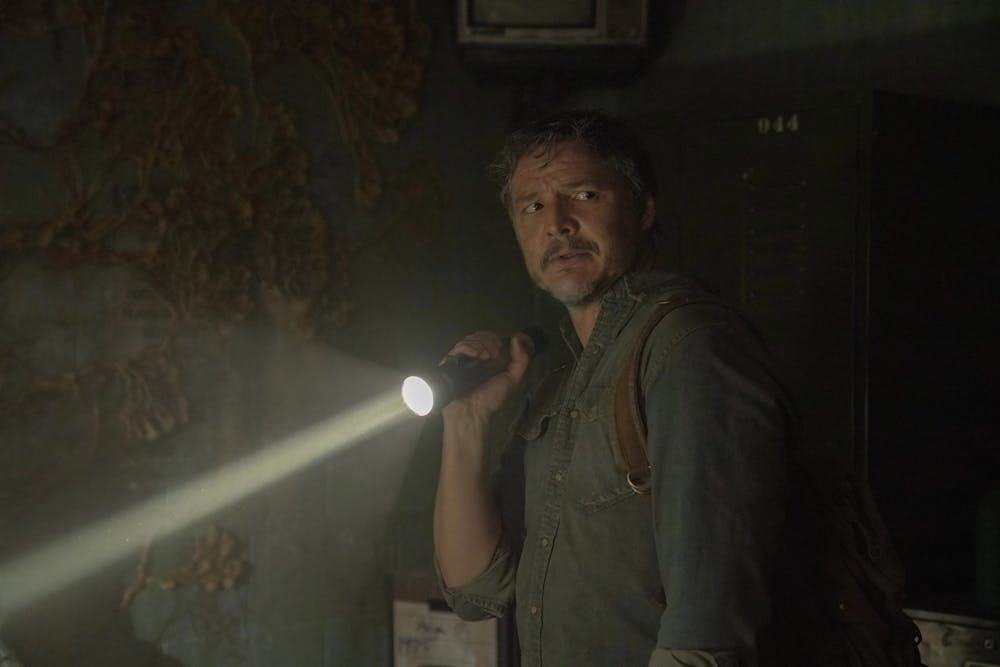SPOILER ALERT: This column contains potential spoilers about the second episode of “The Last of Us.”
Episode Two: “Infected”
When I was little, a show called “Life After People” — which aired in 2009 and 2010 — explored what our planet would look like once people were gone. I’m not sure it gave context for why the humans were gone, they just were, and I just accepted that.
From what I remember — and I mostly remember Chicago being taken over by other species, like vines — it looked a lot like what Boston looks like in “The Last of Us”. It’s what you expect: overgrown with plant life. Filled with collapsing buildings.
Void of sounds or sights representing a bustling, thriving human species.
Something that’s interesting as we continue to explore the world in “The Last of Us” is that we get to see what it would be like for humans to adventure around a somewhat post-human city. It’s not exactly “Life After People” — there are people, obviously — but it’s as close as any human would get to seeing something like that.
Related: [COLUMN: 'The Last of Us' can win the hearts of non-gamers]
That’d be hard to witness, I think. But it’s hard to fully fathom that, because, well, we haven’t really experienced that. We’ve seen ruins of ancient cities, like Pompeii or Babylon, but those didn’t collapse due to a zombie apocalypse that wiped out humans across the world.
It’s remarkable to note all of this because it really did make me feel uneasy. In the second episode’s cold open, we’re dropped in Jakarta, Indonesia — which I remember Sarah (Nico Parker) mentioning to her dad, Joel (Pedro Pascal), in the first episode, so there was some clear foreshadowing — where we meet a mycologist. She’s eating lunch when some form of police or security whisks her away to a lab. They ask her to look at the fungal infection growing inside of a human body.
She tells them they have to bomb the city.
We learn that this is exactly what would happen to other cities — including Boston — to try and slow the spread of the fungal infection.
Joel, Tess (Anna Torv) and Ellie (Bella Ramsey) venture through an old museum that’s covered in fungi and other haunting plant life, making old painted portraits of American presidents look like relics from thousands of years ago, not just hundreds. It’s weird that the objects we make are bound to outlive us — from books to instruments to furniture — blissfully unaware that they’re now more a part of nature than any human civilization.
As we begin to better understand the setting of this show, we also learn more about character dynamics. While it’s pretty clear at this point that Ellie and Joel don’t like each other — they seem to blame the other for what’s happening to them, not fully accepting that neither is really doing anything wrong — they do need each other.
I’m not buying into the idea yet, though, that they’ll have a father-daughter dynamic. Not fully, anyway. Most father-daughter duos won’t make cross-country treks because said daughter may be the cure for the zombifying disease that has infected a planet of humans for 20 years. So, given this unprecedented situation, I think it’s fair to assume that we can expect an unprecedented relationship.
This relationship is basically more dire than any other human relationship in history. It’s fraught with disdain for the other — they bicker constantly, they cuss the other out, more alike than they can yet admit — but there’s also no choice.
Related: [COLUMN: How to upgrade dorm room ramen]
I don’t buy into the idea that Joel wants to replace his daughter with another daughter. I don’t buy into the idea that Ellie, who’s already a scrappy, independent teenager, truly needs a father. They both need a friend, though. They really, really do.
It’s either this or no cure. Joel is really horrible at the whole hope thing, though. That was revealed to be more of a Tess thing, but she became infected in episode two, bravely leaving herself behind as Joel and Ellie reluctantly moved forward.
Hope is so fickle. It’s never guaranteed that a person has it. Joel doesn’t have much of it. Tess had more than she initially let on and becomes angry at Joel when he can’t accept that good news still happens in a broken world — and that’s coming from someone 20 years into the zombie apocalypse.
But hope does seem to be an ever-lasting, innate function within humans. Whether you like it or not, it often starts to creep up on you, forcing you to remember that you actually do want to live. It carries us through everything — a bad semester at school, a fight with your best friend.
The apocalypse.
Joel doesn’t have to love Ellie. But she is a symbol — the only symbol, honestly — of hope for a better future for humanity.
And for Joel.




